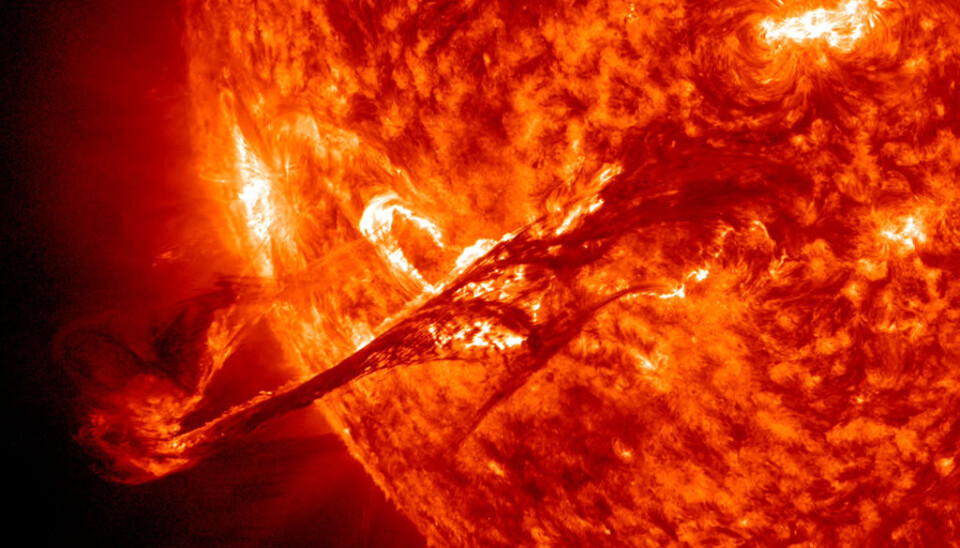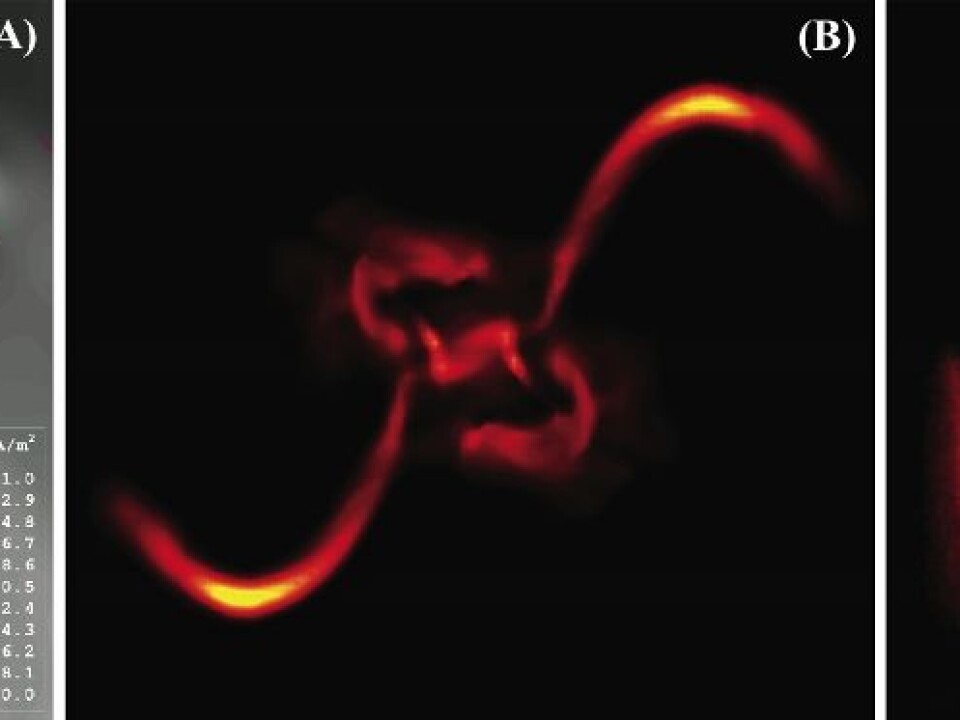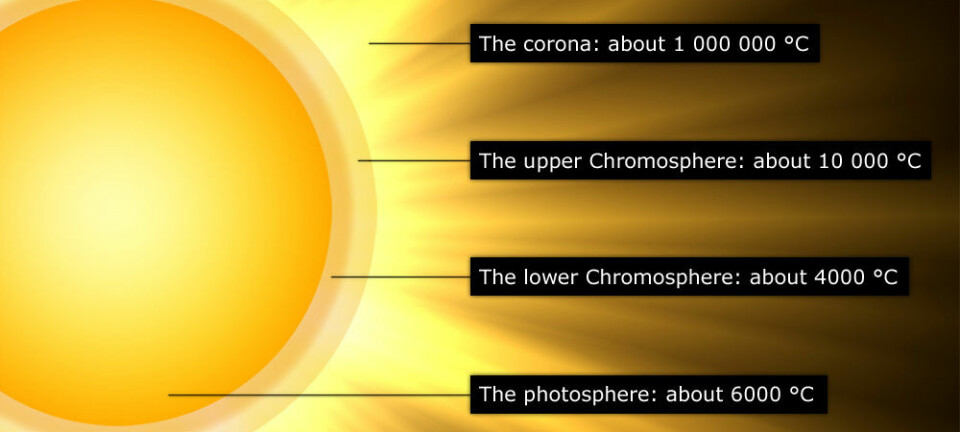
New model helps scientists understand solar flares
Using a new computer model, researchers can now see how a solar flare arises and develops. An increased understanding of the gigantic explosions on the Sun will over time give us better space weather forecasts.
A solar flare is the greatest release of energy in the solar system. And it’s not just fireworks when some of the energy that is normally found in the Sun’s magnetic fields is released in a gigantic explosion in the Sun’s upper atmosphere.
In what is called a coronal mass ejection (CME), the star nearest to us expels enormous amounts of plasma (ionised gas containing positive and negative electrical charges) far into space from its surface. The effects of solar flares typically reach the Earth within a day or two.
Our understanding of these explosions is growing all the time, and astrophysicists hope we will one day understand the Sun so well that we can predict solar flares and their possible consequences for us on Earth.
Together with researchers from China, the US and Romania, associate professor Klaus Galsgaard of the University of Copenhagen’s Niels Bohr Institute has developed a new and improved model for solar flares, which has brought scientists closer to this target.
Starts in the Sun’s convection zone

“We’re trying to understand what happens on the Sun – what conditions and situations are needed to start a coronal mass ejection,” says Galsgaard.
“In the longer term, our model can lead to better weather forecasts for space. The better we understand the processes on the Sun, the better we are at predicting what will happen.”
Until now, astrophysicists have simply observed what happens on the Sun’s surface. But the new model enables the scientists to ‘burrow’ a little way under the surface – their computer simulations start in the convection zone, which is just under the Sun’s surface.
In their computer model, the researchers can follow bundles of magnetic field lines as they rise from the convection zone, break through the Sun’s atmosphere and finally stretch out millions of kilometres into space.
The model is true to nature
We can see that the structures we get from the model actually match our observations, so we are very close to reality.
Klaus Galsgaard
A model has little value if it doesn’t give results that match scientists’ observations. But the new model is true to nature, says Galsgaard.
“We can see that the structures we get from the model actually match our observations, so we are very close to reality.”
In their article, published in the journal Nature Physics, the researchers show how the model can develop intense magnetic fields that form an S-shaped structure on the Sun’s surface. These structures, which emit X-rays, can be seen quite clearly on images taken by the Japanese satellite Hinode, which was launched to study the Sun’s magnetic field.
Better satellites needed
Combining good satellite images with computer models such as this new one can enable scientists to predict solar flares far better than today.
Having timely warnings means that scientists, the authorities and utilities, for example electricity, broadcasting and telephone companies, can be better prepared for solar flares that can affect us on Earth.
If the cloud of hot gases and strong magnetic fields ejected by the Sun is moving towards the Earth, the radiation can injure astronauts and interfere with electronic devices in satellites.
At the Earth’s poles, solar flares can give additional beauty to the natural light displays in the sky – the aurora borealis and the aurora australis.
But the flares can also generate residual currents in electrical circuits on Earth. Long, high-tension electricity transmission lines are particularly affected by this: in March 1989, for example, six million Canadians suffered a blackout when the electricity net in Quebec broke down following a solar flare.
Galsgaard would like to have even better data as input to the new model.
“We need more detailed measurements of the magnetic field on the Sun’s surface,” he says. “For this we can only hope that we will have some satellites in the near future that are far better than those we have now.”
--------------------------------
Read this article in Danish at videnskab.dk
Translated by: Michael de Laine








